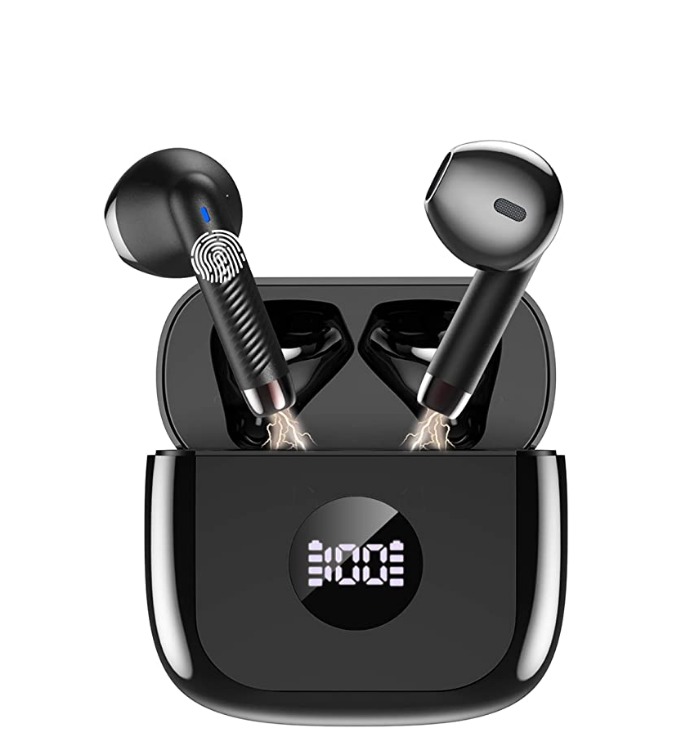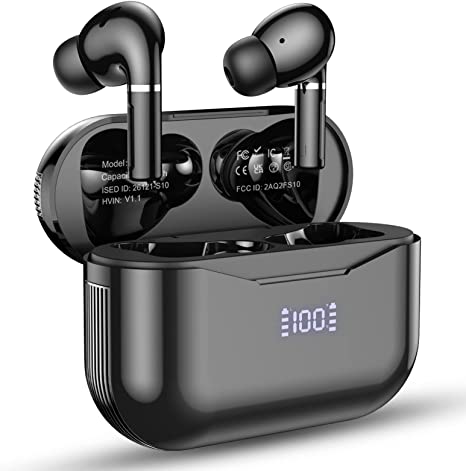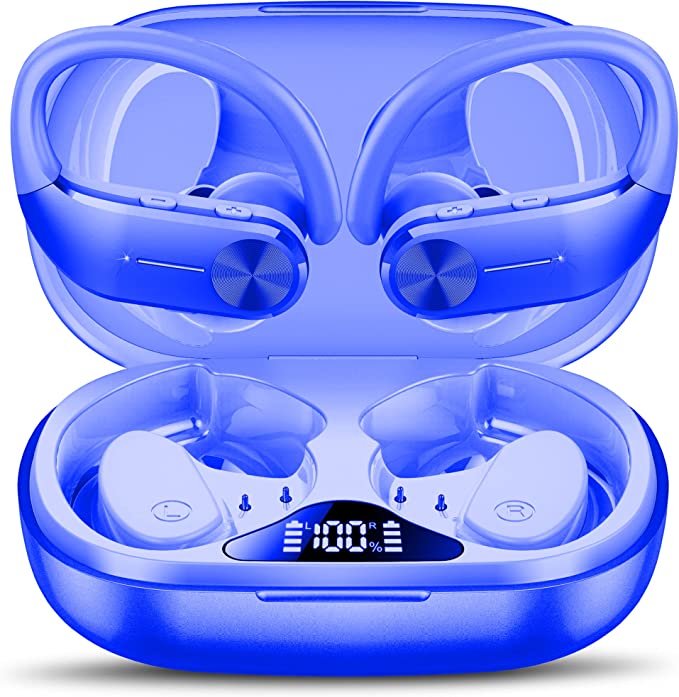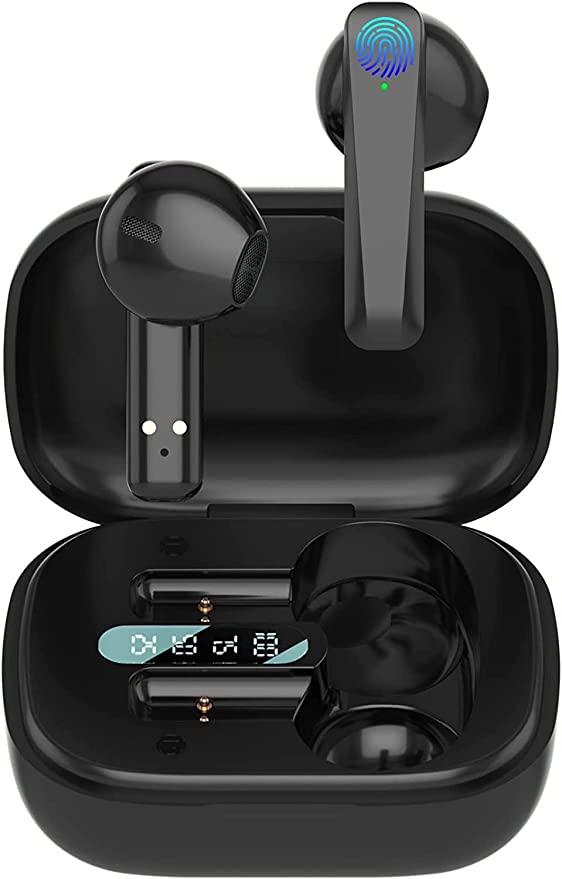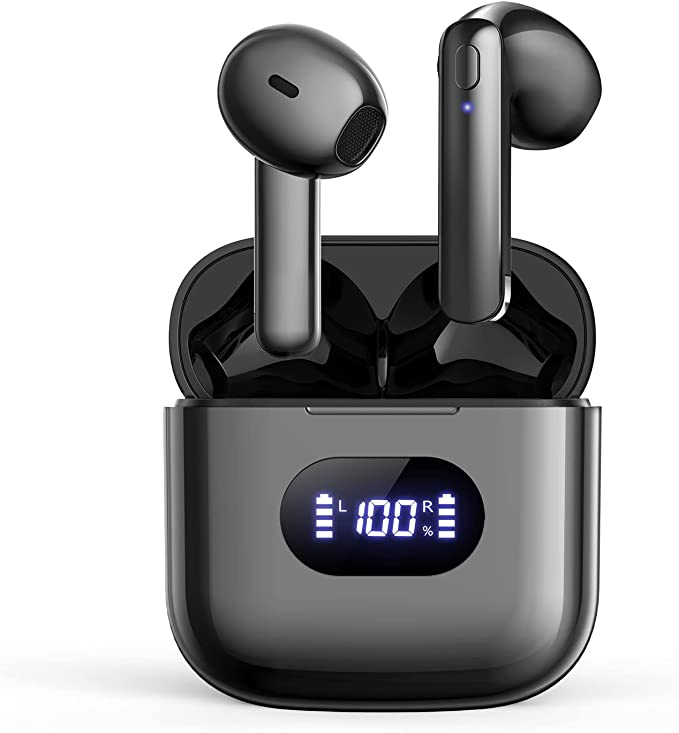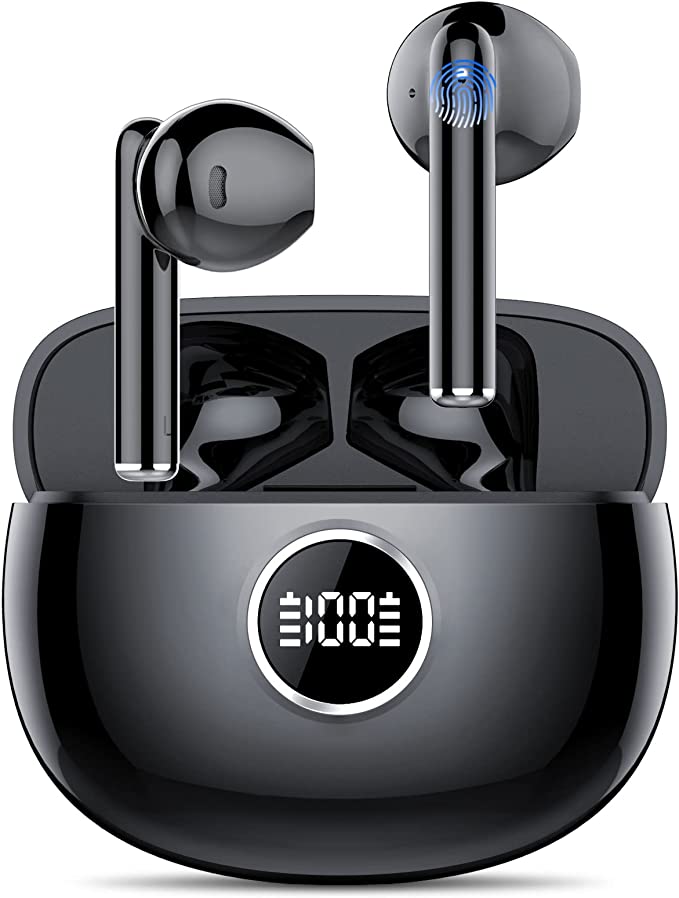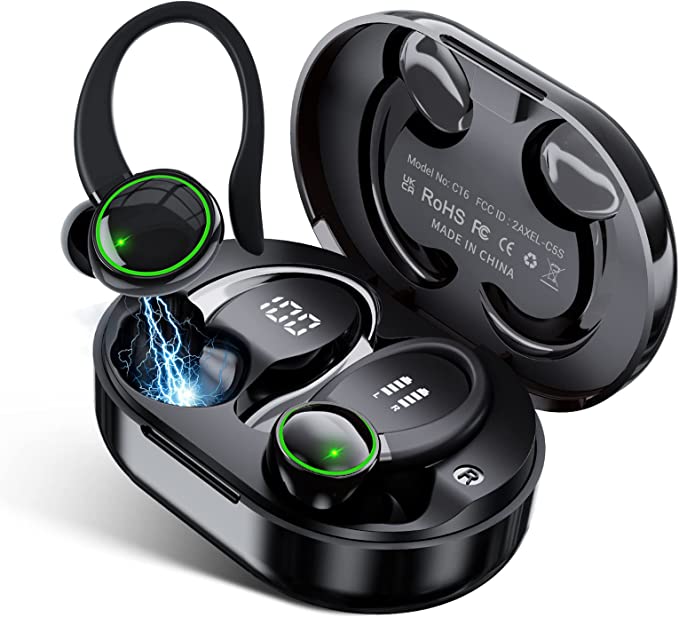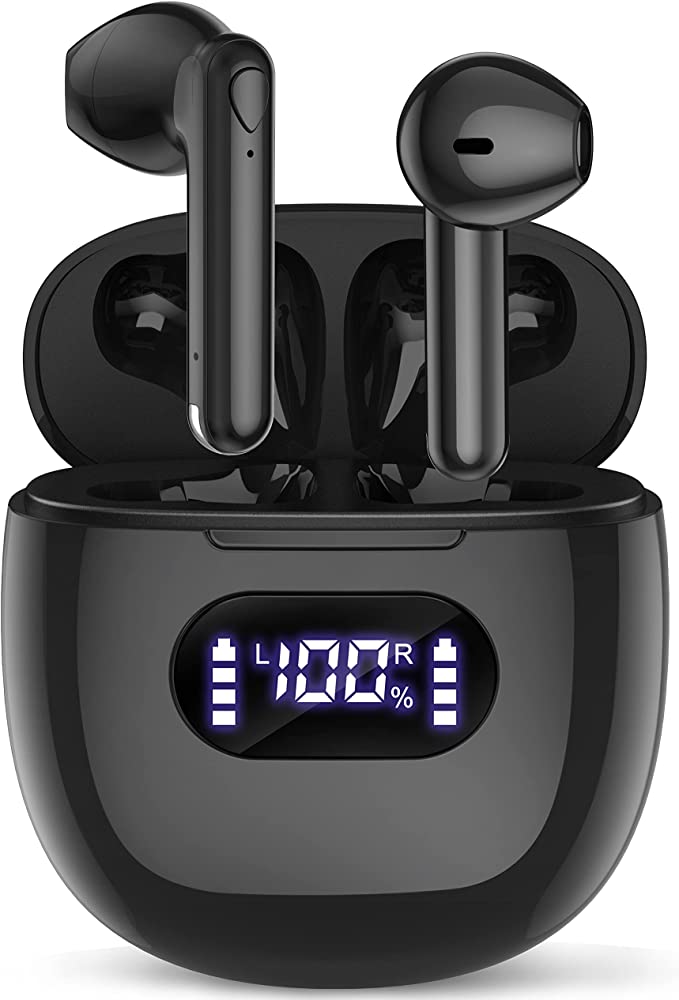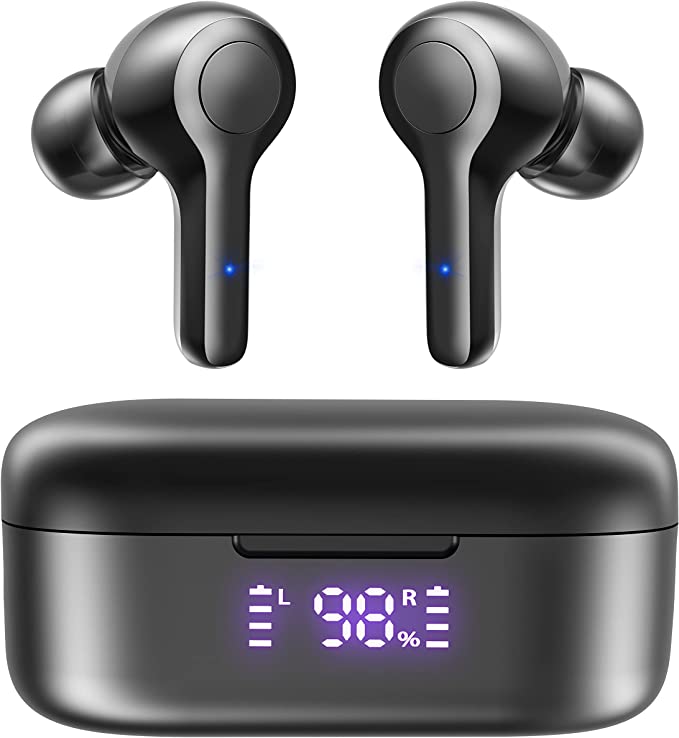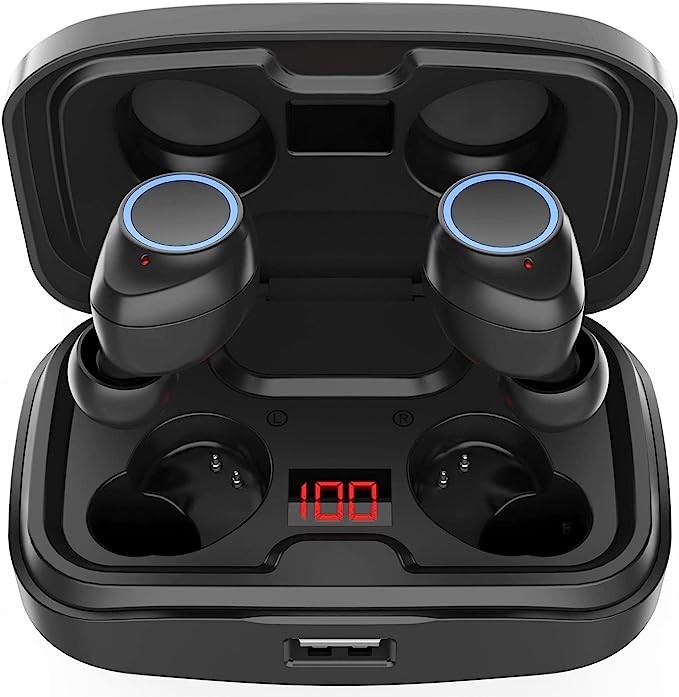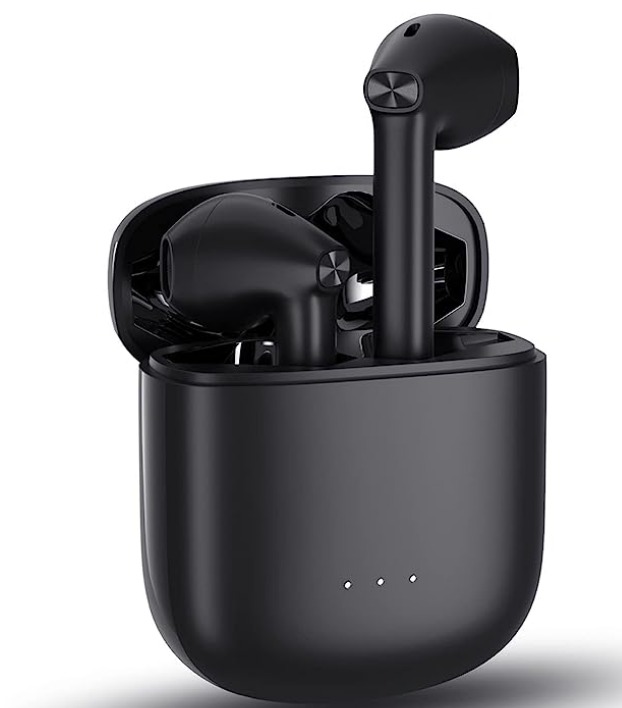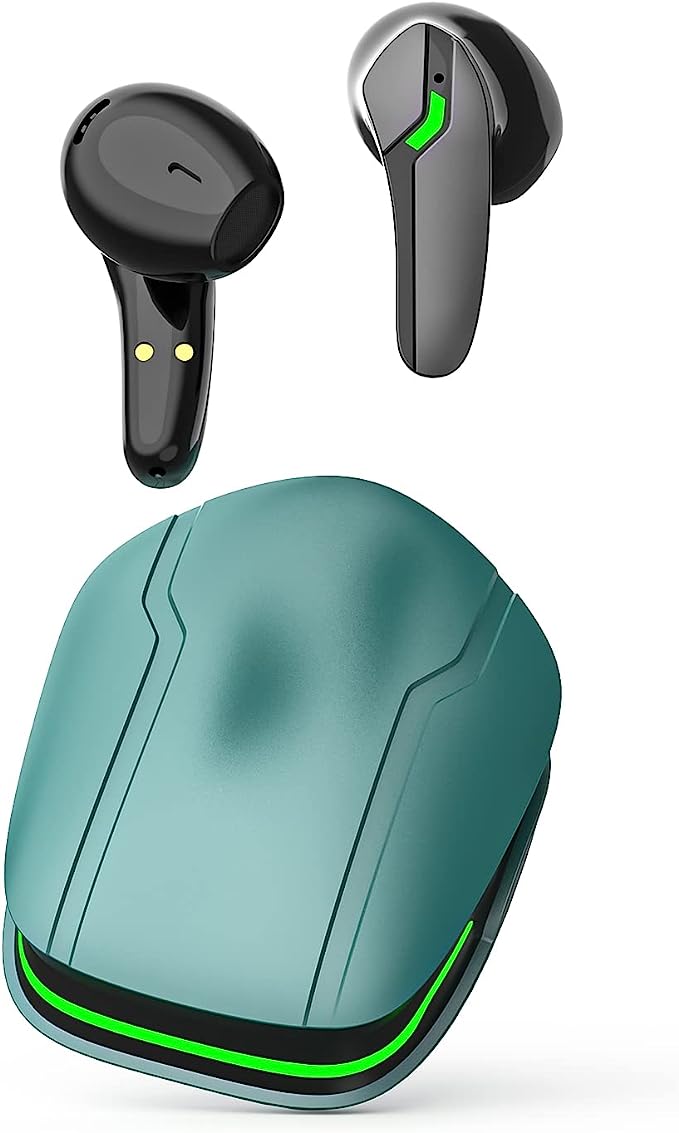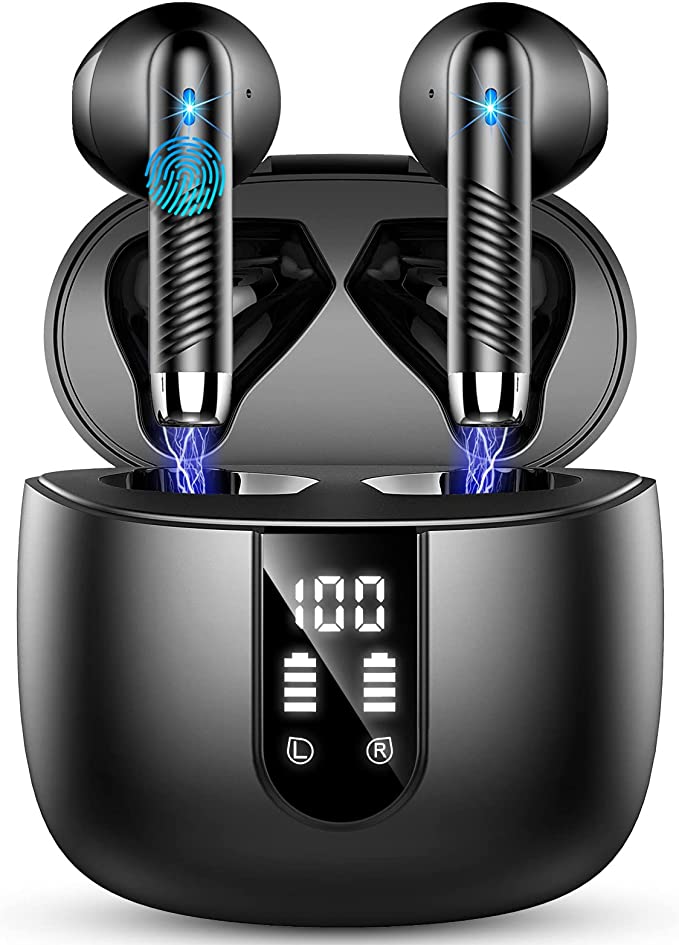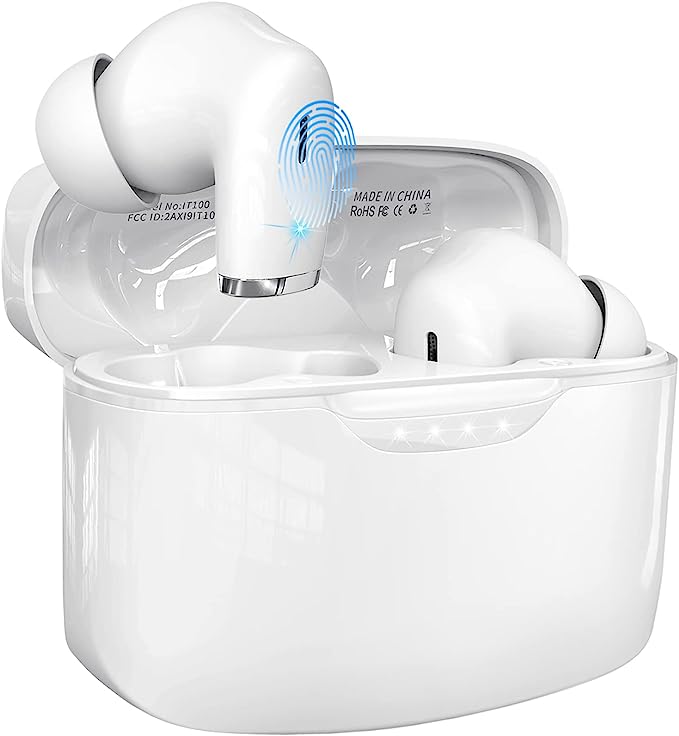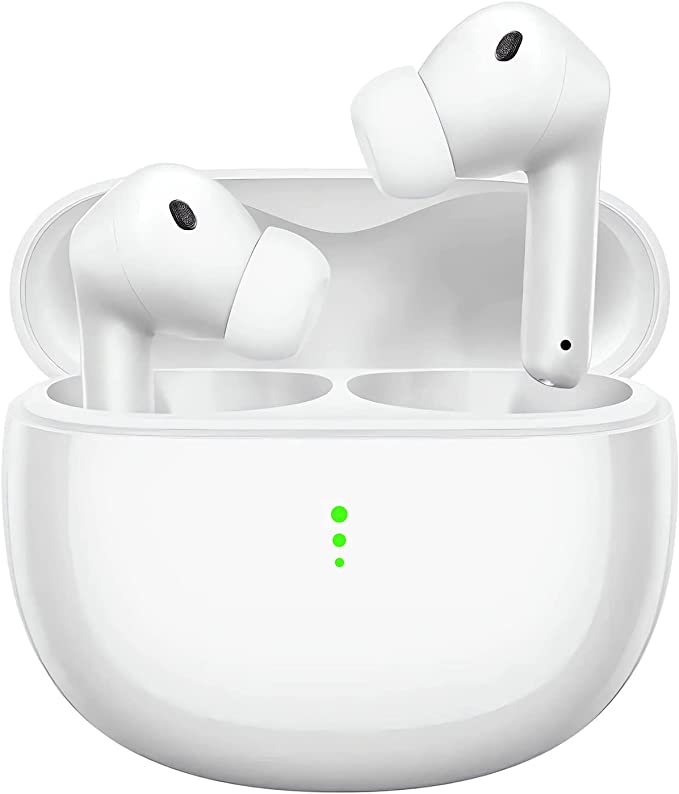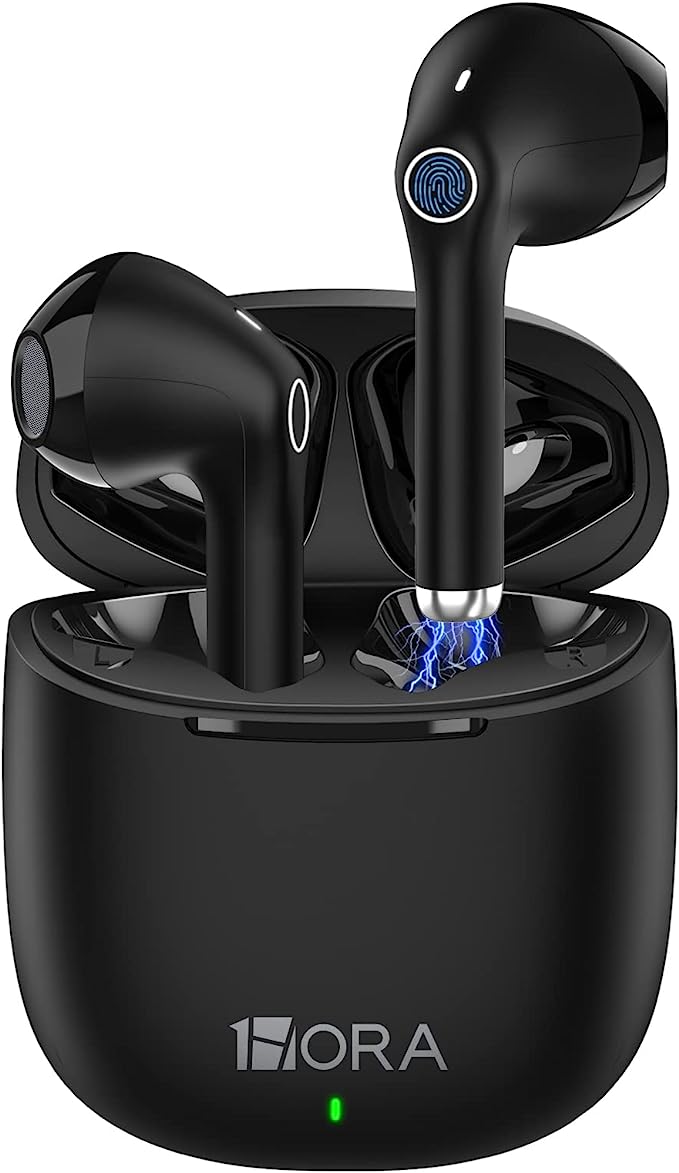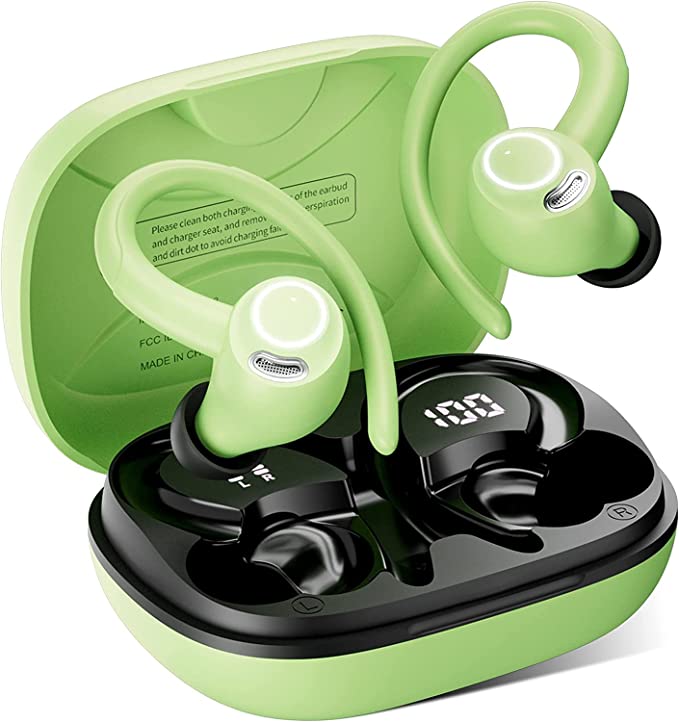IPXOZO A50 Pro & The Science Within: A Deep Dive into Wireless Audio, Noise Cancellation, and Durability
Update on May 29, 2025, 6:49 p.m.
Our lives unfold to an increasingly personal soundtrack, a tapestry woven from podcasts that spark our curiosity on morning commutes, music that fuels our workouts, and crucial calls that connect us across distances. More often than not, this audio experience is delivered invisibly, untethered by wires, flowing directly into our ears. This magic is the product of decades of scientific ingenuity, a quiet symphony of technologies working in concert.
Today, we embark on an exploration of this wireless audio world. Our lens will be the listed features of a product like the IPXOZO A50 Pro Wireless Earbuds. It’s important to note upfront that this specific model is currently listed as “unavailable” on some platforms and has garnered limited public feedback (a 3.4-star average from just two ratings at the time of sourcing its initial data). Therefore, this piece is not a review or an endorsement of the IPXOZO A50 Pro itself. Instead, we’ll use its advertised specifications – Bluetooth 5.3, Active and Environmental Noise Cancellation (ANC & ENC), a 50-hour playtime, IPX7 waterproofing, and “Deep Bass” – as waypoints on a journey to understand the remarkable science and engineering that make such features possible in any modern wireless earbud.

Movement I: The Digital Handshake – Bluetooth 5.3 and the Quest for Seamless Connection
Every time you effortlessly pair your earbuds to your phone or laptop, you’re witnessing a sophisticated digital “handshake.” This seamless greeting is largely orchestrated by Bluetooth technology, a wireless communication standard whose anachronistic name, surprisingly, harks back to Harald “Bluetooth” Gormsson, a 10th-century Danish king famed for uniting warring Scandinavian tribes. The pioneers of Bluetooth technology in the late 1990s, a consortium including Ericsson, Nokia, Intel, Toshiba, and IBM, envisioned a similar unifying power for short-range wireless communication, aiming to replace the tangled mess of proprietary cables.
The IPXOZO A50 Pro lists Bluetooth 5.3 as its connectivity backbone. For the end-user, version numbers can seem like an endless march of incremental updates, but each iteration typically brings tangible benefits. Compared to its predecessors, Bluetooth 5.3 generally offers enhancements in several key areas crucial for a satisfying audio experience:
- Connection Stability: One of the primary goals is a more robust and reliable link. This translates to fewer frustrating dropouts, stutters, or disconnections, even in environments насыщенный (saturated) with other wireless signals – a common scenario in bustling cityscapes or crowded offices. Think of it as a clearer, stronger radio signal less prone to interference.
- Power Efficiency: Each generation strives to do more with less energy. For tiny earbud batteries, this is paramount. Bluetooth 5.3 often incorporates Low Energy (LE) features more deeply, allowing the earbuds and the transmitting device to communicate using significantly less power. This directly contributes to longer listening times between charges, freeing you from constant battery anxiety.
- Faster Pairing and Switching: While not always a headline feature, improvements can also include quicker initial pairing and more seamless switching between multiple paired devices (like your phone and your laptop).
Beyond these core improvements, Bluetooth 5.3 lays more groundwork for future innovations, such as LE Audio. This next-generation Bluetooth audio standard, progressively rolling out, promises even better power efficiency, higher audio quality through new codecs like LC3 (Low Complexity Communication Codec), and exciting new capabilities like Auracast™ broadcast audio. Auracast™ could allow you to share your audio stream with multiple nearby listeners or tune into public broadcasts in places like airports or gyms directly with your compatible earbuds.
Imagine the frustration of your music cutting out mid-stride during a run, or a crucial point in a podcast being lost to a glitch. The relentless evolution of Bluetooth aims to make these annoyances relics of the past, ensuring your personal audio sphere remains a consistent and reliable companion.

Movement II: Crafting Your Personal Soundscape – The Twin Arts of Noise Cancellation
Our auditory world is rarely a quiet one. From the rumble of a train to the chatter of a busy café, unwanted sounds constantly vie for our attention. Noise cancellation technology in earbuds offers a two-pronged approach to managing this sonic environment: creating a haven of tranquility for your listening pleasure, and ensuring your voice is heard clearly above the din during calls.
Part A: Active Noise Cancellation (ANC) – Your Personal Sanctuary of Silence
The concept of Active Noise Cancellation has a surprisingly long history, with initial patents dating back to the 1930s. However, it was Dr. Amar Bose (founder of Bose Corporation) who, during a noisy flight in the late 1970s, famously conceived of the idea for noise-cancelling headphones that could significantly reduce the drone of aircraft engines. This technology, once a luxury for pilots and first-class passengers, has now become a sought-after feature in consumer earbuds.
So, how does this acoustic magic work? ANC is a beautiful application of physics, specifically the principle of destructive interference.
1. Listening to the Enemy: Tiny microphones embedded on the outside of the earbuds continuously monitor the ambient sounds in your environment, particularly persistent, low-frequency noises like engine hums, air conditioning drones, or the rumble of traffic.
2. The Counter-Attack: A specialized processor within the earbuds instantly analyzes these incoming sound waves and generates a new sound wave that is precisely 180 degrees out of phase – an “anti-noise” signal.
3. The Sound of Silence (Almost): This anti-noise is then played through the earbud’s speakers. When the original ambient noise wave and the newly generated anti-noise wave meet in your ear canal, they effectively cancel each other out. Imagine two water waves of equal size meeting crest-to-trough; they flatten each other. The result isn’t absolute silence (ANC is most effective against constant, low-frequency sounds, less so against sudden, sharp noises or higher frequencies like speech), but a significant reduction in perceived background noise.
This creates your personal “sound bubble,” allowing you to immerse yourself in your music at lower, safer volumes, focus better in a distracting office, or simply enjoy a more peaceful commute. It’s like having a highly selective bouncer for your ears, only letting in the sounds you want to hear.
Part B: Environmental Noise Cancellation (ENC) – Making Your Voice the Star
While ANC focuses on what you hear, Environmental Noise Cancellation (often referred to in the context of microphone technology for calls) is all about what others hear – specifically, your voice. We’ve all been on that call where the person on the other end sounds like they’re in a wind tunnel or a crowded stadium. ENC aims to solve this.
Earbuds featuring ENC for their microphones, as listed for the IPXOZO A50 Pro, typically employ a combination of: * Multiple Microphones: Often, two or more microphones are used per earbud. One might be positioned to primarily capture your voice (beamforming), while others are oriented to pick up ambient sounds from different directions. * Sophisticated Algorithms: A Digital Signal Processor (DSP) then analyzes the signals from these microphones. By comparing the timing and characteristics of the sounds arriving at each microphone, these algorithms can differentiate between your speech and the surrounding noise. * Noise Suppression: The processor then works to suppress or filter out the identified background noise before transmitting your voice to the listener. This could involve attenuating specific frequencies associated with common noises or using AI-enhanced techniques to isolate human speech patterns.
The classic “cocktail party problem” in auditory science refers to the human brain’s remarkable ability to focus on a single speaker in a noisy environment. ENC in earbuds attempts to replicate and enhance this ability electronically. The goal is to ensure that whether you’re taking an important business call from a bustling street corner or catching up with a friend from a noisy café, your voice remains the main event, clear and intelligible, rather than being drowned out by the sonic chaos around you.

Movement III: The Unseen Marathon – Powering Days of Audio with Smart Battery Tech
A common pain point with early true wireless earbuds was their fleeting battery life. The claim of 50 hours total playtime for the IPXOZO A50 Pro (presumably including multiple recharges from its carrying case) highlights just how far battery technology and power management have come. This impressive endurance isn’t just about cramming a bigger battery into a tiny package; it’s a multi-faceted engineering feat.
At the core lies the lithium-ion (Li-ion) battery, a marvel of chemistry that has revolutionized portable electronics since its commercialization in the early 1990s. These batteries offer a high energy density (storing a lot of energy in a small, lightweight package), a relatively slow self-discharge rate, and the ability to be recharged hundreds of times. Continuous research aims to improve their capacity, lifespan, charging speed, and safety.
However, achieving such extended playtime involves more than just the battery cells themselves:
- System-on-Chip (SoC) Efficiency: The main chip inside the earbuds, which handles everything from Bluetooth communication to audio processing and noise cancellation, is a major power consumer. Modern SoCs are designed with incredibly low power consumption in mind, utilizing advanced semiconductor manufacturing processes and sophisticated power-saving modes that allow parts of the chip to “sleep” when not actively needed.
- Bluetooth Low Energy (BLE): As discussed earlier, the power efficiency of the Bluetooth standard itself is crucial. BLE protocols allow for robust communication with minimal energy draw, especially during periods of inactivity or when transmitting low-bandwidth data.
- Software Optimization: The firmware running on the earbuds plays a significant role in power management. Intelligent algorithms can optimize how tasks are processed, when wireless radios are active, and how aggressively power-saving modes are engaged, all without compromising the user experience.
- The Charging Case as a Power Bank: The charging case is more than just a convenient storage solution; it’s a lifeline. It contains its own, larger battery, capable of recharging the earbuds multiple times over. The design of efficient charging circuits within both the case and the earbuds ensures that energy transfer is quick and loses minimal power.
The benefit to the user is clear: freedom. Freedom from the constant hunt for a power outlet, freedom to travel for days without worrying about your audio companion dying, and the freedom to simply enjoy extended periods of music, podcasts, or calls. This “all-day (and more)” battery life transforms wireless earbuds from a niche accessory into a truly indispensable part of our daily toolkit.

Movement IV: Dancing in the Rain – The Practical Magic of IPX7 Water Resistance
Life is unpredictable, and our gadgets often bear the brunt of it. For earbuds, especially those intended for active use or all-weather commuting, a key feature is their ability to withstand moisture. The IPXOZO A50 Pro is listed with an IPX7 rating, which provides a specific level of assurance against water ingress.
To understand this, we need to briefly decode the IP (Ingress Protection) rating system. Standardized by the International Electrotechnical Commission (IEC) in their document IEC 60529, IP ratings classify the degree of protection provided by an enclosure against the intrusion of solid objects (like dust) and liquids (like water).
An IP rating typically has two digits (e.g., IP68): * The first digit (0-6) indicates protection against solid particles. * The second digit (0-9K) indicates protection against liquids.
In the case of IPX7: * The “X” means that the device has not been officially rated for protection against solid particle ingress (or the manufacturer has chosen not to specify it). This doesn’t necessarily mean it has no dust protection, just that it’s not certified for it under this particular rating. * The “7” signifies a high level of liquid ingress protection. Specifically, it means the product is protected against the effects of temporary immersion in water under standardized conditions: up to 1 meter (approximately 3.3 feet) of submersion for up to 30 minutes.
Achieving an IPX7 rating requires meticulous design and manufacturing. This includes using water-resistant materials, precisely engineered seals around any openings (like charging ports or microphone inlets, though true wireless earbuds often charge via contacts and may have internal protective membranes for mics), and robust assembly to ensure the enclosure maintains its integrity.
What does this mean for the user? Peace of mind. An IPX7 rating suggests your earbuds can comfortably handle: * Sweat during intense workouts: Perspiration is a common enemy of electronics, but IPX7 provides a good shield. * Being caught in the rain: A sudden downpour during your run or commute shouldn’t spell disaster for your audio. * Accidental splashes or even a brief drop into shallow water: While not designed for swimming, a quick dunk should be survivable.
It’s important to remember that IP ratings are for fresh water, and the protection can diminish over time as seals age or if the device is damaged. Also, “waterproof” doesn’t mean invincible. However, an IPX7 rating provides a significant degree of confidence that your earbuds are built to endure the everyday encounters with moisture that an active lifestyle often entails.

Movement V: The Soul of the Sound – Exploring the Depths of Bass and Audio Quality
Beyond connectivity, noise cancellation, and durability, the ultimate purpose of any earbud is, of course, to deliver sound. The IPXOZO A50 Pro’s description mentions “Deep Bass,” and its product title even includes the somewhat ambiguous “30H Deep Bass.” Let’s clarify what “Deep Bass” typically signifies in audio and how it’s achieved, while treating “30H” as likely referring to a characteristic or marketing term rather than a specific 30-hour bass-only playtime, especially when “50 Hrs Earphones” is also stated for overall battery.
Sound, as we perceive it, is made up of vibrations across a spectrum of frequencies. Bass frequencies are the lower end of this spectrum, typically ranging from around 20 Hz (the lowest thrum humans can generally hear) up to about 250 Hz. “Deep bass” implies an ability of the earbuds to reproduce these low frequencies with presence, power, and clarity, allowing you to feel the throb of a kick drum, the rumble of a bass guitar, or the ominous undertones in a film score.
Achieving impactful bass from tiny earbuds is an engineering challenge:
- The Driver (The Heart of the Earbud): The core component responsible for producing sound is the driver, essentially a miniature loudspeaker. Most earbuds use dynamic drivers, which consist of a diaphragm (a thin membrane), a voice coil (a coil of wire attached to the diaphragm), and a magnet. When an electrical audio signal passes through the voice coil, it creates a fluctuating magnetic field that interacts with the permanent magnet, causing the voice coil and attached diaphragm to vibrate rapidly. These vibrations create sound waves.
- For good bass response, the diaphragm needs to be able to move a sufficient amount of air and do so accurately at low frequencies. The material of the diaphragm, its size, and the design of the magnetic motor all play crucial roles.
- Acoustic Enclosure and Tuning: The physical housing of the earbud acts as an acoustic enclosure. The volume of this enclosure, any internal porting (tiny vents), and the way the driver is mounted significantly affect how sound waves, especially low frequencies, are shaped and resonate. Engineers spend countless hours tuning the acoustics – much like tuning a musical instrument – to achieve a desired sound signature. This might involve adjusting the damping of the driver, the shape of the sound bore (the tube leading to your ear), and the seal provided by the ear tips.
- The Ear Tip Seal: A proper seal between the ear tip and your ear canal is absolutely critical for good bass perception. Without a good seal, bass frequencies tend to “leak out,” resulting in a thin, tinny sound. This is why most earbuds come with multiple sizes of ear tips.
- Digital Signal Processing (DSP): Modern earbuds often use DSP to further shape the sound. This can involve equalization (EQ) to boost or cut specific frequencies. An earbud marketed for “deep bass” might have its DSP programmed to subtly enhance the low-end response.
The mention of “30H Deep Bass” in the product title alongside “50 Hrs Earphones” is likely a marketing emphasis on the bass quality or a specific audio profile, rather than a separate battery life figure for bass-only playback, which would be highly unusual and confusing. The primary battery claim of “50 Hrs” for the earphones (with the case) is the more standard metric. Therefore, “Deep Bass” should be understood as a promise of a rich, impactful low-frequency experience, appealing to listeners who enjoy genres like EDM, hip-hop, pop, or action movies where bass plays a prominent role.
It’s also worth a brief detour here to mention audio codecs. When you stream music wirelessly via Bluetooth, the audio data has to be compressed (encoded) by your phone or source device and then decompressed (decoded) by your earbuds. The specific codec used – common ones include SBC (Subband Codec, universally supported but often considered basic), AAC (Advanced Audio Coding, favored by Apple devices), and various forms of aptX (often found on Android devices, known for lower latency and potentially higher quality) – can significantly impact the final sound quality and the perceived fidelity, especially for discerning listeners. A great driver and acoustic design can be let down if the codec being used is overly lossy.

Movement VI: Beyond the Basics – The Nuances of Wireless Audio
While the core features discussed cover much ground, the full tapestry of the wireless audio experience is woven with even finer threads. For instance, latency, or the delay between when a sound is generated by your device and when you actually hear it in your earbuds, can be a crucial factor. For music listening, a slight delay might be imperceptible. But for gaming or watching videos, high latency can lead to a frustrating mismatch between what you see and what you hear (e.g., a character’s lips moving out of sync with their dialogue). Bluetooth technology and codecs like aptX Low Latency or aptX Adaptive actively work to minimize this delay.
The very concept of True Wireless Stereo (TWS), where each earbud connects independently (or one acts as a primary connecting to the source and then relays to the secondary), was a significant engineering hurdle. Early TWS systems sometimes suffered from synchronization issues between the left and right earbuds or less stable connections. Modern TWS chipsets have largely overcome these challenges, providing a much more robust and seamless stereo experience.
Coda: The Ever-Evolving Soundscape – Reflections and Future Notes
The journey through the technologies listed for a product like the IPXOZO A50 Pro reveals a microcosm of the broader advancements in consumer electronics. From the fundamental physics of sound wave interference in ANC to the intricate chemistry of lithium-ion batteries, and the complex digital signal processing that fine-tunes our audio, each feature is a testament to sustained innovation.
These technologies – stable Bluetooth connectivity, effective noise cancellation, enduring battery life, robust water resistance, and satisfying audio reproduction – don’t exist in isolation. They synergize, aiming to create an experience that is immersive, convenient, and resilient enough to integrate seamlessly into the fabric of our daily lives.
As we noted at the outset, the IPXOZO A50 Pro itself is currently “unavailable” and carries very limited public user data, so we cannot speak to its specific real-world execution of these features. However, by understanding the science behind such advertised capabilities, we become more informed consumers, better equipped to appreciate the engineering marvels that even modestly priced wireless earbuds can represent.
The world of audio technology continues its relentless march forward. We can anticipate even smarter noise cancellation that adapts more precisely to our surroundings, battery life that pushes further into multi-day use without a thought, more personalized sound profiles driven by AI and hearing assessments, and perhaps even new ways of interacting with our audio through biometric sensors or more intuitive controls. The quest for the perfect, personal, and ever-present soundscape is far from over, promising an exciting future for our ears.
